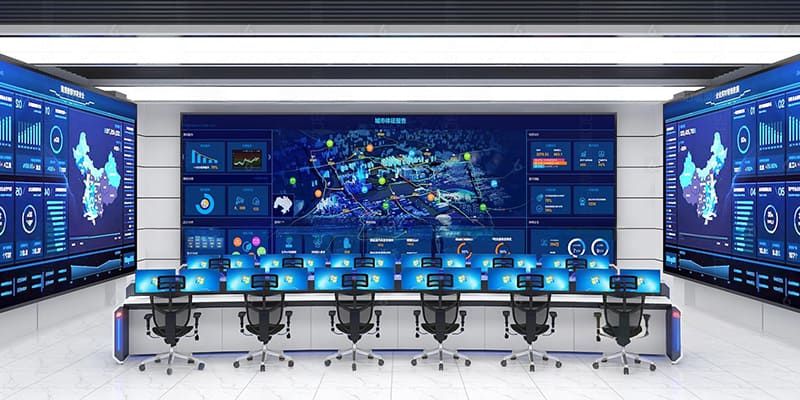What Are the Advantages of a Distributed Processing System for Fine-Pitch LED Displays?
Distributed video processing system is a new network transmission splicing technology. It supports multi-terminal synchronous control of multiple display systems and multi-resolution signal transmitting to high-definition fine-pitch LED displays. Distributed processing systems, compared to the gradually replaced centralized systems, have some important advantages in LED display applications.

1. System Architecture: Improved Cooling, Reduced Cost, and Scalability Simplified
In contrast to fan-cooled centralized architectures, distributed systems use passive (natural) cooling. Not only is the distributed arebut it also enables quiet running with enhanced heat dispersal. The modules run in parallel across the network, providing better scalability at reduced cost. Additionally, the system solves card-based expansion issues in conventional centralized implementations. Distributed systems provide user-selectable input source settings — each can be configured to have its own color scheme — without loss of flexibility or usability.
2. Control Capabilities: High Fault Tolerance and Human-Centered Design
Modules in a distributed are not dependent on one another; therefore, if there is an error in one unit, the whole system will not be impacted. It is much better than fault tolerance in centralized systems, where a single point of failure would render the whole display useless. Distributed systems, in signal processing, employ lossless compression instead of sending raw video signals. This results in high quality output, increases transmission distance, and increases anti-interference capability, giving a better overall system performance.
3. Real-Time and Seamless Signal Switching
Distributed systems utilize real-time encoding technology to provide seamless signal switching. This removes common problems in centralized installations like black screens or frozen images when switching sources, resulting in much smoother and more natural viewing on LED displays.
4. User Experience: Zero Learning Curve
Distributed systems provide users with their accustomed operation patterns. Almost no learning is required. Display areas, split-screen areas, overlay and roam content, and even multiple predefined display modes may be defined by users. distributed are preview and one-click switching are provided, and support for traditional video systems is robust — enabling significantly enhanced ease of use and operating flexibility.
Briefly, the distributed processing system provides a wiser, more effective, and user-friendly method of driving fine-pitch LED displays and is still at the top of display environments today.
- Previous Article:Why Do LED Display Beads Turn Black?
- Next Article:No content for the time being



